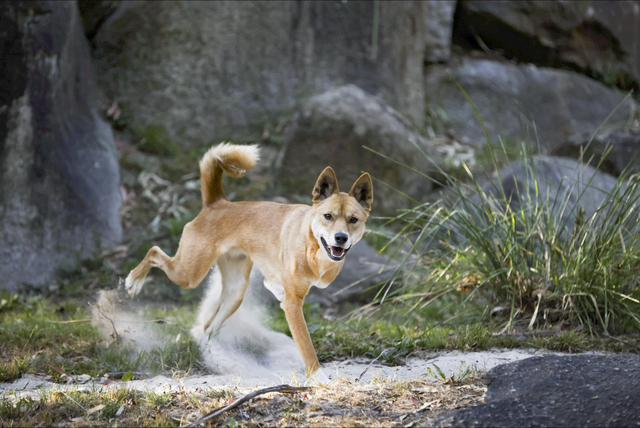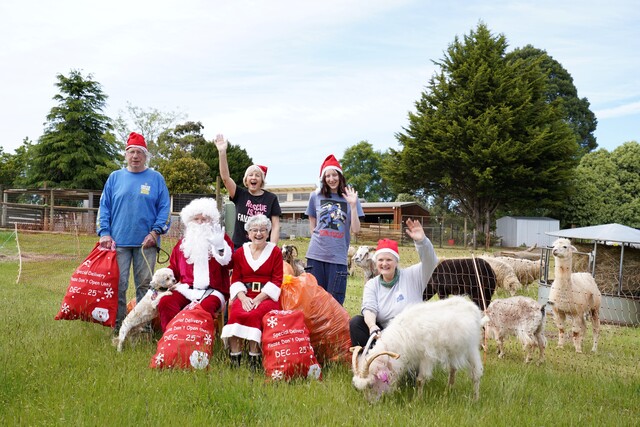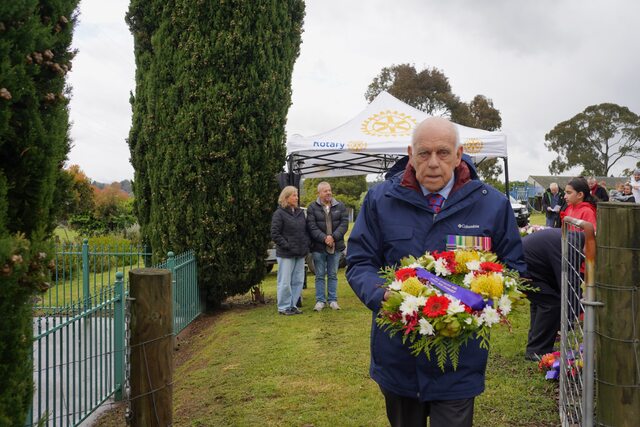This soggy start to spring hasn’t dampened the mood of Healesville Sanctuary’s dingoes with Jedda and Waltani relishing the wet weather and surprisingly not smelling like wet dogs…or anything at all.
The lack of smell is a strategic move of the species, so that they can carefully approach prey in the wild.
Healesville Sanctuary Dingo Keeper Lauren Nankervis said not having a scent plays to a dingo’s advantage as an apex predator in our ecosystem.
“Dingoes have evolved to have no scent to better stalk their prey. Essentially prey animals can’t smell them coming,” Ms Nankervis said.
Another way dingoes have adapted to their hunting abilities is by rolling in the scent of their prey.
“They will find wombat poo or possum poo, all those kinds of things, and they absolutely love to roll in it. Once they are covered in the scent of their prey they blend in even better with the environment.”
“We are lucky at Healesville Sanctuary that we have an array of different native wildlife that live here which means we can provide different scents and smells for the dingoes to sniff out,” Ms Nankervis said.
“To mix things up we might put sand from the bilby habitat or straw bedding from the kangaroos into the dingo habitat to see how the environmental change engages their natural instincts,” she said.
Jedda, the Sanctuary’s young female dingo was curious to smell the bilby sand that was placed out in a box for her to investigate, while young male Waltani explored the straw bedding before scent marking with urine over the top of the smell.
Scent marking can serve as a social communication tool to let other dingoes in the area know this territory is occupied and other dingoes should stay away.
Dingoes arrived on mainland Australia approximately 5,000 years ago and are considered vulnerable in the wild by the International Union for Conservation of Nature. Dingoes are family-based animals with strong social hierarchies, made-up of a dominant female, her bonded male and their pups.
While the appearance of dingoes and dogs may look similar there are many differences. Dingoes behaviourally act differently to domestic dogs. They are more instinctive, more aloof and live in packs. Dingoes also have rotational wrist joints which means they are well adapted to climbing, jumping and pouncing on prey.
Three Dingoes call Healesville Sanctuary home. Tropical dingo Maliki and Alpine dingoes Jedda and Waltani. Visitors can learn more about the species during a keeper talk on the Dingo Country Track at 3.40pm daily.






